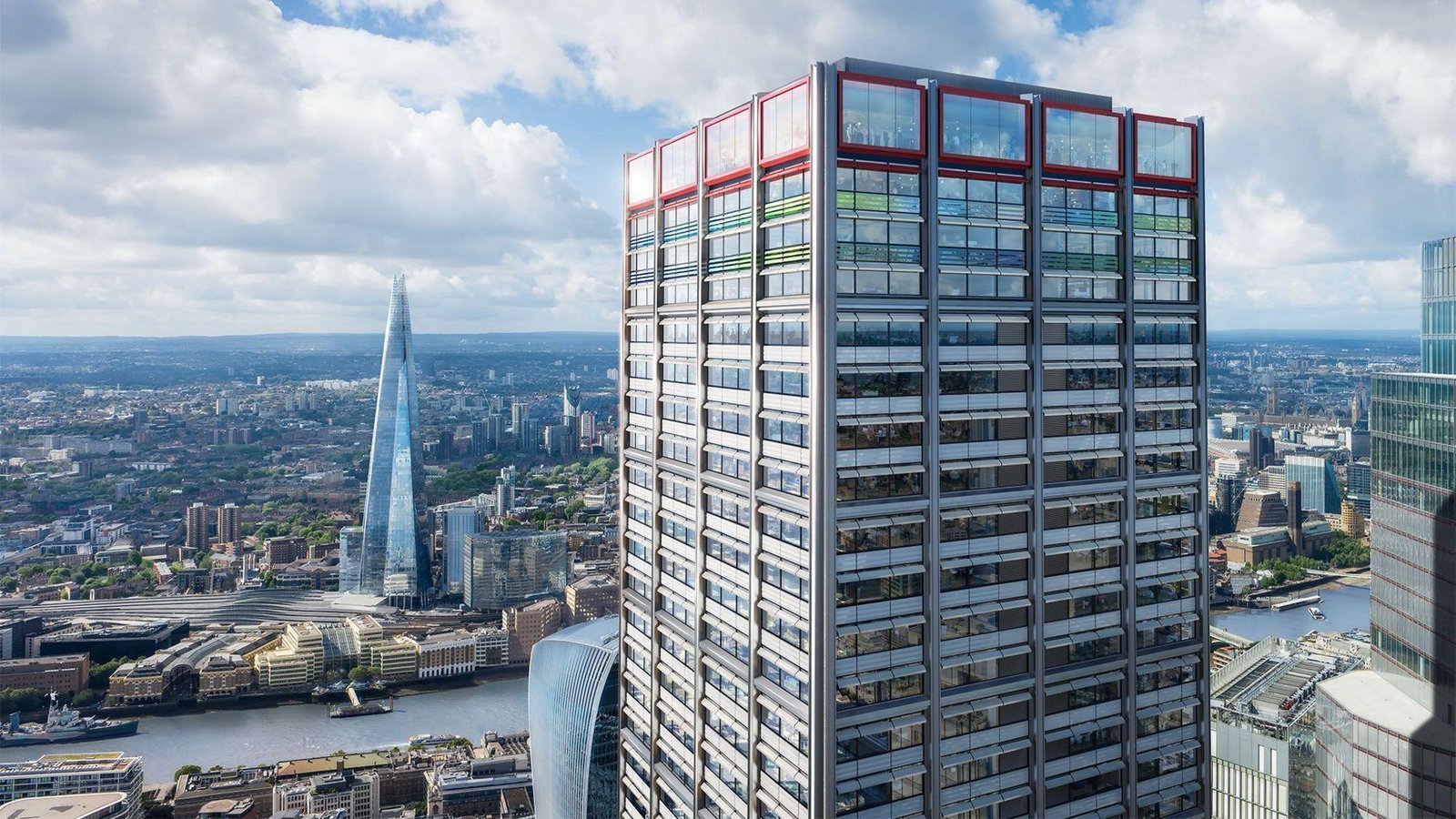
ACCO Navigating Regulations: Building Compliance in Karachi
Navigating Regulations: Building Compliance in Karachi
SEO Meta-Description: Discover essential guidelines and steps for navigating building compliance regulations in Karachi to ensure safe and legal construction.
Introduction
Navigating building compliance regulations in Karachi can be challenging due to the complex legal landscape and stringent requirements. Compliance is crucial for ensuring the safety, legality, and longevity of construction projects. This guide will walk you through everything you need to know about building compliance in Karachi, from understanding local regulations to practical steps for achieving compliance.
| Outline | Sub-topics |
|---|---|
| Understanding Building Compliance | Definition and Importance, Key Stakeholders, Legal Framework |
| Overview of Karachi’s Building Regulations | Historical Background, Key Regulations, Recent Changes |
| Key Regulatory Bodies | Sindh Building Control Authority (SBCA), Karachi Development Authority (KDA), Local Government Bodies |
| Pre-construction Compliance Requirements | Site Selection, Land Use Permissions, Environmental Impact Assessment |
| Design Phase Compliance | Architectural Plans, Structural Safety Standards, Accessibility Standards |
| Construction Phase Compliance | Construction Permits, Safety Regulations, Regular Inspections |
| Post-construction Compliance | Final Inspections, Occupancy Certificates, Maintenance Regulations |
| Common Compliance Challenges | Bureaucratic Delays, Corruption, Lack of Awareness |
| Tips for Successful Compliance | Effective Planning, Professional Advice, Continuous Monitoring |
| Case Studies | Successful Projects, Failed Projects, Lessons Learned |
| Environmental Regulations | Environmental Protection Laws, Sustainable Building Practices |
| Safety Standards | Worker Safety Regulations, Emergency Preparedness, Safety Audits |
| Accessibility Compliance | Standards for Disabled Access, Implementation Challenges |
| Legal Consequences of Non-compliance | Fines and Penalties, Legal Actions, Project Halts |
| Financial Implications | Cost of Compliance, Financial Penalties, Impact on Project Budget |
| Community Involvement | Stakeholder Engagement, Community Benefits, Social Responsibility |
| Technological Solutions for Compliance | Compliance Software, Smart Building Technologies, Digital Monitoring Tools |
| Future Trends in Building Compliance | Emerging Regulations, Technological Advancements, Evolving Best Practices |
| FAQs | Common Questions, Practical Solutions, Additional Resources |
| Conclusion | Summary, Final Thoughts, Call to Action |
Understanding Building Compliance
Definition and Importance
Building compliance refers to adhering to all relevant laws, regulations, and standards during the construction and maintenance of buildings. It ensures the safety, health, and welfare of building occupants and the general public. Compliance helps prevent legal issues and promotes sustainable and safe urban development.
Key Stakeholders
Key stakeholders in building compliance include architects, engineers, contractors, regulatory bodies, property developers, and the general public. Each group has a critical role in ensuring that buildings meet all necessary standards and regulations.
Legal Framework
The legal framework for building compliance in Karachi is composed of various laws, regulations, and codes. These include the Sindh Building Control Ordinance, the Karachi Building and Town Planning Regulations, and environmental protection laws. Understanding this framework is essential for ensuring compliance.
Overview of Karachi’s Building Regulations
Historical Background
Karachi’s building regulations have evolved over the years to address the growing needs of the city’s population and infrastructure. Initially, regulations were minimal, but with urban expansion, more comprehensive laws were introduced to ensure safety and order.
Key Regulations
Some of the key regulations governing building compliance in Karachi include zoning laws, building codes, fire safety standards, and environmental impact assessments. These regulations set out specific requirements for various aspects of construction and maintenance.
Recent Changes
Recent changes in Karachi’s building regulations have focused on improving safety standards and incorporating sustainable practices. New regulations may include stricter fire safety measures, updated accessibility standards, and enhanced environmental protections.
Key Regulatory Bodies
Sindh Building Control Authority (SBCA)
The SBCA is responsible for enforcing building regulations in Karachi. It oversees the approval of building plans, conducts inspections, and ensures compliance with safety and zoning laws.
Karachi Development Authority (KDA)
The KDA plays a crucial role in urban planning and development. It coordinates with other regulatory bodies to ensure that construction projects align with the city’s master plan and zoning requirements.
Local Government Bodies
Local government bodies, including municipal corporations and town councils, are involved in issuing permits, conducting inspections, and enforcing local building codes. They work closely with the SBCA and KDA to ensure compliance.
Pre-construction Compliance Requirements
Site Selection
Choosing the right site is the first step in ensuring compliance. The site must be zoned for the intended use, and developers must obtain necessary land use permissions.
Land Use Permissions
Obtaining land use permissions involves navigating local zoning laws and securing approvals from relevant authorities. This ensures that the construction project aligns with the city’s planning objectives.
Environmental Impact Assessment
An Environmental Impact Assessment (EIA) is often required to evaluate the potential environmental effects of a proposed project. This assessment helps mitigate negative impacts and ensures compliance with environmental regulations.
Design Phase Compliance
Architectural Plans
Architectural plans must adhere to local building codes and regulations. These plans should detail the building’s layout, structure, and safety features to ensure compliance from the outset.
Structural Safety Standards
Compliance with structural safety standards is crucial to prevent building failures. These standards dictate the materials and construction techniques that must be used to ensure the building’s stability and durability.
Accessibility Standards
Ensuring accessibility for disabled individuals is a key component of building compliance. This includes incorporating features like ramps, elevators, and accessible restrooms in the design phase.
Construction Phase Compliance
Construction Permits
Obtaining construction permits is a critical step in the compliance process. Permits ensure that all planned work meets regulatory standards and can proceed legally.
Safety Regulations
Compliance with safety regulations during construction protects workers and the public. This includes adhering to safety protocols, providing necessary protective equipment, and ensuring safe working conditions.
Regular Inspections
Regular inspections by regulatory bodies are essential to monitor compliance throughout the construction phase. These inspections help identify and rectify any deviations from approved plans and standards.
Post-construction Compliance
Final Inspections
A final inspection is conducted to ensure that the completed building complies with all relevant regulations. This inspection covers structural integrity, safety features, and accessibility standards.
Occupancy Certificates
An occupancy certificate is issued after the final inspection, certifying that the building is safe and compliant for occupancy. This certificate is necessary for legally occupying and using the building.
Maintenance Regulations
Ongoing compliance involves adhering to maintenance regulations that ensure the building remains safe and functional. Regular maintenance and inspections are necessary to uphold compliance standards.
Common Compliance Challenges
Bureaucratic Delays
Bureaucratic delays can hinder compliance efforts, causing project timelines to extend and costs to rise. Streamlining approval processes and maintaining clear communication with regulatory bodies can mitigate these delays.
Corruption
Corruption within regulatory bodies can complicate compliance efforts. Ensuring transparency and accountability in the approval and inspection processes is crucial for overcoming this challenge.
Lack of Awareness
A lack of awareness about regulations and compliance requirements can lead to inadvertent non-compliance. Education and training for all stakeholders involved in construction projects can help address this issue.
Tips for Successful Compliance
Effective Planning
Thorough planning is essential for navigating building compliance successfully. This includes understanding all relevant regulations, securing necessary permits, and developing detailed project plans.
Professional Advice
Seeking professional advice from architects, engineers, and legal experts can help ensure that all aspects of the project comply with regulations. Professional guidance can also aid in navigating complex compliance requirements.
Continuous Monitoring
Continuous monitoring of compliance throughout the construction process helps identify and address issues promptly. Regular inspections and audits are essential to maintaining compliance from start to finish.
Case Studies
Successful Projects
Examining successful projects can provide valuable insights into effective compliance strategies. These case studies highlight best practices and lessons learned from projects that met all regulatory requirements.
Failed Projects
Failed projects offer important lessons on the consequences of non-compliance. Analyzing these cases can help identify common pitfalls and strategies to avoid them in future projects.
Lessons Learned
Both successful and failed projects provide lessons that can inform future compliance efforts. These lessons highlight the importance of thorough planning, effective communication, and adherence to regulations.
Environmental Regulations
Environmental Protection Laws
Environmental protection laws aim to minimize the impact of construction on the environment. Compliance with these laws involves conducting EIAs, managing waste, and implementing sustainable practices.
Sustainable Building Practices
Incorporating sustainable building practices into construction projects can help achieve environmental compliance. This includes using eco-friendly materials, reducing waste, and optimizing energy efficiency.
Safety Standards
Worker Safety Regulations
Worker safety regulations are designed to protect construction workers from hazards. Compliance involves providing proper training, safety equipment, and adhering to safety protocols.
Emergency Preparedness
Emergency preparedness is a critical aspect of building safety. This includes having plans and procedures in place to respond to emergencies, such as fires, earthquakes, and other hazards.
Safety Audits
Regular safety audits help ensure ongoing compliance with safety standards. These audits identify potential risks and provide recommendations for mitigating them.
Accessibility Compliance
Standards for Disabled Access
Compliance with accessibility standards ensures that buildings are usable by individuals with disabilities. This includes features like ramps, accessible restrooms, and appropriate signage.
Implementation Challenges
Implementing accessibility standards can present challenges, such as retrofitting older buildings or meeting specific design requirements. Addressing these challenges requires careful planning and resources.
Legal Consequences of Non-compliance
Fines and Penalties
Non-compliance with building regulations can result in significant fines and penalties. These financial repercussions can impact project budgets and timelines.
Legal Actions
Legal actions, including lawsuits and injunctions, can arise from non-compliance. These actions can halt construction and result in costly legal battles.
Project Halts
Non-compliance can lead to project halts, delaying completion and increasing costs. Ensuring compliance from the outset helps avoid these disruptions.
Financial Implications
Cost of Compliance
While compliance involves costs, such as fees for permits and inspections, it is essential for avoiding more significant financial penalties and legal issues down the line.
Financial Penalties
Non-compliance can result in substantial financial penalties, impacting the overall budget of the project. These penalties can be avoided through diligent compliance efforts.
Impact on Project Budget
Compliance costs should be factored into the project budget from the beginning. Proper budgeting ensures that funds are available for all necessary compliance activities.
Community Involvement
Stakeholder Engagement
Engaging stakeholders, including local communities, in the planning and development process helps ensure that projects meet the needs and expectations of those affected.
Community Benefits
Compliance with building regulations often leads to benefits for the community, such as improved safety, infrastructure, and environmental quality. Highlighting these benefits can garner community support.
Social Responsibility
Adhering to building regulations is part of a broader commitment to social responsibility. This involves considering the long-term impacts of construction projects on the community and environment.
Technological Solutions for Compliance
Compliance Software
Compliance software can streamline the process of meeting regulatory requirements. These tools help manage permits, track inspections, and ensure that all necessary documentation is in place.
Smart Building Technologies
Smart building technologies, such as automated monitoring systems and IoT devices, can enhance compliance by providing real-time data on building performance and safety.
Digital Monitoring Tools
Digital monitoring tools enable continuous oversight of compliance activities. These tools help identify issues early and ensure that all aspects of the project meet regulatory standards.
Future Trends in Building Compliance
Emerging Regulations
Building regulations are continually evolving to address new challenges and technologies. Staying informed about emerging regulations is essential for maintaining compliance.
Technological Advancements
Advancements in technology are transforming the construction industry, offering new tools and methods for achieving compliance. Embracing these technologies can enhance efficiency and accuracy.
Evolving Best Practices
Best practices for building compliance are constantly evolving. Keeping up with industry trends and incorporating new strategies can help ensure ongoing compliance and project success.
FAQs
What is the role of the SBCA in building compliance?
The Sindh Building Control Authority (SBCA) is responsible for enforcing building regulations, approving plans, conducting inspections, and ensuring compliance with safety and zoning laws in Karachi.
How do I obtain a construction permit in Karachi?
To obtain a construction permit in Karachi, you need to submit your architectural plans to the SBCA for approval, ensure compliance with zoning laws, and pay the required fees.
What are the consequences of non-compliance with building regulations?
Non-compliance can result in fines, legal actions, project halts, and increased costs. It can also compromise the safety and legality of the construction project.
How can I ensure my building project meets accessibility standards?
Ensuring compliance with accessibility standards involves incorporating features like ramps, elevators, and accessible restrooms in the design phase and consulting with experts on accessibility requirements.
What are some common challenges in building compliance?
Common challenges include bureaucratic delays, corruption, and lack of awareness about regulations. Addressing these challenges requires effective planning, professional advice, and continuous monitoring.
How can technology help with building compliance?
Technology, such as compliance software, smart building technologies, and digital monitoring tools, can streamline the compliance process, provide real-time data, and ensure accurate documentation.
Conclusion
Building compliance in Karachi is a multifaceted process involving adherence to various regulations and standards. By understanding the legal framework, engaging with key stakeholders, and leveraging technology, construction projects can achieve compliance and contribute to safe, sustainable urban development. Stay informed, plan effectively, and prioritize compliance to ensure the success and legality of your building projects.




